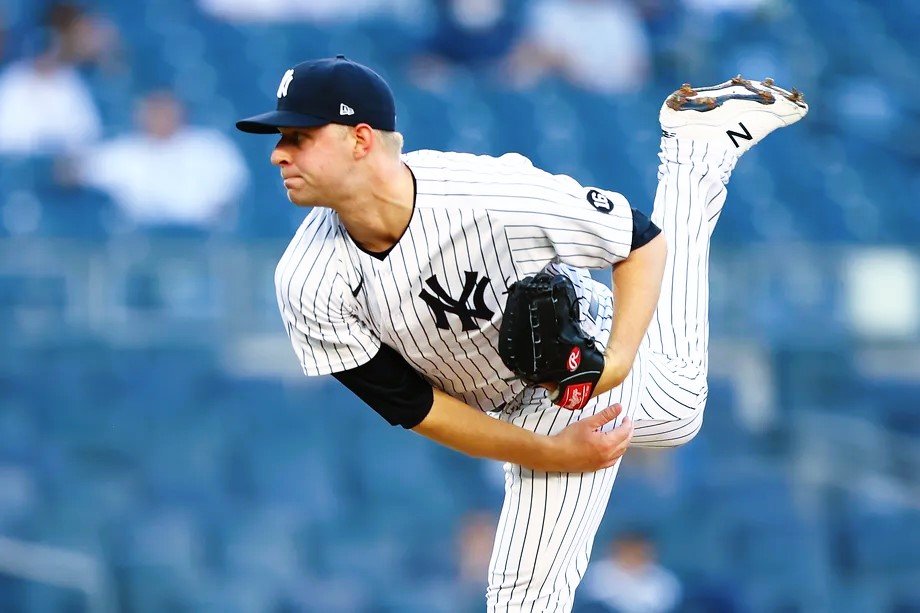The 5.5-Man Pitching Rotation
Photo Credit: Mike Stobe/Getty Images
The MLB starting pitching rotation has been evolving for more than a century: We’ve seen the 3-man rotation, the 4-man rotation, the 5-man rotation, and now even some 6-man rotations. However, the optimal rotation is the 5.5-man rotation. In this analysis, I’ll explain why.
Throughout the 2023 season, there were a total of 4860 starts. Among these, 3877 starts involved the starting pitcher taking the mound with four, five, or six days of rest. I collected data on these starts and computed the Fielding Independent Pitching (FIP) for each one. Additionally, I adjusted the FIP for each start by factoring in the opposing team's offensive capabilities, based on their 2023 weighted On-Base Average (wOBA). The evident strong linear relationship between wOBA and runs scored is depicted in Figure 1 provided below.
Figure 1: Linear correlation between wOBA and runs scored in 2023
Every 10-point deviation in wOBA that the opponent generated above or below the league's average wOBA of 0.316, resulted in a corresponding 0.32767 decrease or increase in FIP, thereby establishing the "Modified FIP." I compared each starting pitcher's Modified FIP in a particular game against his season-average FIP, thereby generating the final "Modified FIP premium." I then grouped league-wide Modified FIP premiums based on the number of rest days before a start.
Table 1: Modified FIP premium aggregated across all starts in 2023 and grouped by the number of rest days
As evident from Table 1, five days of rest was the most common setup in the 2023 season, accounting for 39% of the starts. Furthermore, 33% of starts were with 4 days of rest, 8% of starts were with six days, and the remaining 20 % were on even longer rest (for instance due to the start of the season, return from all-star break, return from injury, etc.) or shorter rest due the use of an opener.
When it comes to performance, we see that starting pitchers, when provided four days of rest, exhibit a Modified FIP premium of 0.239. This premium decreases to 0.144 when they receive five days of rest and increases to 0.291 with six days of rest. Notably, the Modified FIP premium remains positive across all scenarios due to the fact that borderline starters and versatile pitchers alternating between starting and relieving roles tend to have lower FIPs when pitching out of the bullpen.
Judging by the Modified FIP premiums, we can clearly see that pitching on five days rest is optimal. In fact, teams across the league benefitted from their 1886 starts on a five-day rotation, collectively saving 102 runs and increasing their combined win count by 10 compared to utilizing four days of rest exclusively. Conversely, the 406 starts made on a six-day rest cycle resulted in a cost of 12 runs and a reduction of 1 win in total compared to the four-day rest scenario*.
The intuition as to why five days of rest is better than four days of rest is that the starters are able to gain a small amount of freshness and stamina without losing connection with their release point and the strike zone. However, having six days of rest makes the starters even more fresh, but comes with the cost of disrupting their pitching rhythm.
But how can a team assure that its starters are starting on 5 days rest as often as possible?
The answer is a 5.5 man rotation in which five primary starters take turn in the rotation.
In a week in which a team has an off day, the team can keep its starters on five days rest with just a five man rotation. However, when a team has six or more consecutive days without an off day, it can start its swing-man out of the bullpen (ideally on five days rest for him), call up a well-rested arm from AAA (also ideally on five days rest), or go with a bullpen game.
*The runs and wins were adjusted on Dec 13, calculated using the MLB average 5.1 innings pitched per start in 2023.


